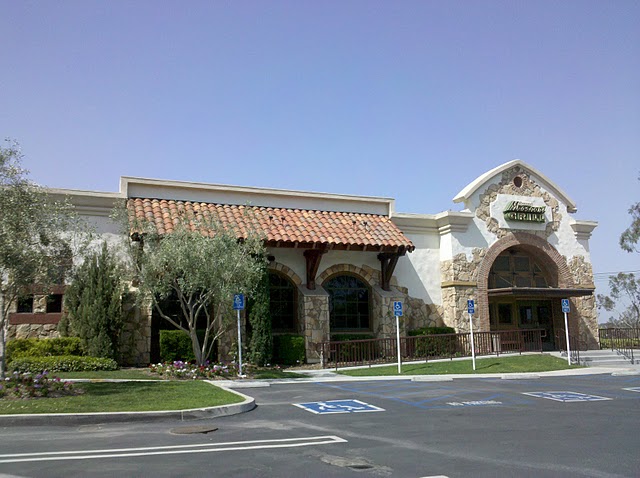Entrepreneur Philip J. Romano founded the first Romano’s Macaroni Grill in Leon Springs, Texas in 1988, inspired by his grandmother’s Italian family recipes. He chose this unincorporated area outside San Antonio for its affordable real estate and rustic charm, which complemented his vision for theatrical, open-kitchen dining. Brinker International soon acquired the concept in 1989, expanding it to over 230 locations nationwide. The original site’s journey from culinary innovation to cultural landmark tells a deeper story of American dining evolution.
Philip Romano: From Fuddruckers to Italian Family Recipes
The mastermind behind several beloved American restaurant concepts, Philip Romano began carving his culinary empire in the early 1980s with Fuddruckers—a burger joint known for on-site beef grinding and open kitchens.
You’d recognize Romano’s signature approach to multi-concept entrepreneurship in those early ventures. After growing Fuddruckers to dozens of locations and exiting his ownership in the mid-1980s, he didn’t rest on success. Instead, he developed new concepts and pioneered experiential touches like fresh-baked buns, visible prep areas, and interactive condiment bars. Romano’s philosophy rejected cookie-cutter formulas and emphasized authenticity in everything he created. His innovative streak mirrors the entrepreneurial spirit of Texans who turned simple ideas into category-defining products across industries.
Finding the Perfect Location in Leon Springs
When Philip Romano sought his next venture after Fuddruckers, he discovered an unexpected gem in Leon Springs—an unincorporated area just outside San Antonio that would become the birthplace of his most enduring concept.
You’ll appreciate how Romano’s choice blended strategy with opportunity. The setting offered room for large dining spaces, butcher-paper-covered tables, and communal seating that fit his theatrical vision. Positioned near other local draws—including Rudy’s Country Store & Bar-B-Q—the site leveraged existing traffic while establishing its own identity.
The rustic atmosphere matched Romano’s plan: grandma-inspired Italian cuisine, high visibility from main roads, and access to growing neighborhoods. Leon Springs’ blend of rural charm and suburban convenience created the ideal backdrop for introducing his “next-generation” Italian dining concept. The location officially opened on April 19, 1988, marking the beginning of a national restaurant brand.
Grandmother’s Kitchen: The Culinary Inspiration
View this post on Instagram
At the heart of Romano’s vision for Macaroni Grill was something far more personal than business strategy—his grandmother’s kitchen. The restaurant’s soul emerged from warm memories of hearty regional Italian cooking that defined his childhood.
When you dine at Macaroni Grill, you’re experiencing that storytelling through food. The concept advanced Italian-American dining with:
-
Authentic ingredients used to recreate robust, simple flavors
-
Communal dining that encouraged sharing and conversation
-
Regional comfort dishes interpreted with American innovation
-
Rustic techniques that preserved tradition while remaining approachable
Much like farm-to-table movements, the grandmother-inspired approach focused on seasonality and made-from-scratch preparations. It wasn’t just about recipes—it forged an emotional connection that distinguished Macaroni Grill from competitors and resonated with guests seeking both nourishment and nostalgia.
Building a Restaurant Empire From Texas Soil
From Leon Springs soil, Philip J. Romano planted the seeds of a restaurant empire on April 19, 1988. Fresh from prior successes, he tapped into the Texas culinary scene, recognizing the state’s blend of entrepreneurism and hearty dining.
The original location wasn’t just a restaurant—it was the physical manifestation of family-driven cooking and convivial hospitality. Romano’s menu focused on classic Italian dishes with Mediterranean influences that would become the chain’s signature style. Within a year, Brinker International embraced the vision and took over the concept rights, propelling Macaroni Grill from a single Texas eatery to a coast-to-coast presence.
The Rise to National Recognition Under Brinker
Brinker International’s 1989 acquisition of the Macaroni Grill concept catapulted the fledgling Texas restaurant onto America’s culinary map. Norman Brinker’s leadership transformed the lone Leon Springs site into a 230-restaurant portfolio by the mid-2000s.
Brinker’s strategic brand positioning involved:
-
Differentiating Macaroni Grill as an upscale Italian-American complement to Chili’s
-
Leveraging Chili’s operational expertise to scale nationwide
-
Maintaining Italian-inspired menus and ambiance for a distinct identity
-
Using domestic and international franchising to extend reach
This period became the brand’s golden era, as Brinker’s multi-brand strategy helped Macaroni Grill redefine casual Italian dining. Brinker later divested the chain in 2008, but by then Macaroni Grill had already secured its place in the national dining landscape.
A Cultural Landmark’s Impact on San Antonio Dining
Nestled in the rolling hills northwest of San Antonio, the original Macaroni Grill helped transform Leon Springs from a quiet outpost into a culinary destination. You’d find more than pasta—it became a gathering spot that strengthened community identity, where local families and notable guests broke bread together.
The restaurant blended authentic Italian flavors with casual accessibility, influencing eateries across the region and helping position San Antonio as a diverse food city with rich hospitality traditions. Founded in 1988 by Philip J. Romano, the concept later expanded to hundreds of locations. After Macaroni Grill departed, The Grill at Leon Springs continued the site’s legacy for years until a devastating fire in 2021, underscoring how deeply these culinary landmarks became embedded in local culture.
The End of an Era: Legacy Beyond the Original Location

A bittersweet chapter closed when the original Leon Springs Macaroni Grill shuttered, marking the end of the pioneer site that launched a nationwide phenomenon. Through multiple ownership shifts and economic pressures, the brand’s story continued beyond its birthplace.
You can trace the journey through four phases:
-
Rapid expansion – from one site to 230+ restaurants under Brinker
-
Corporate reshuffling – ownership changes between 2008–2015
-
Financial contraction – downsizing to dozens of company-owned locations by the late 2010s
-
Cultural persistence – ongoing influence on casual Italian dining despite closures
The foundations laid in 1988—grandmother-inspired recipes, open kitchens, and convivial hospitality—still shape how Americans experience approachable Italian cuisine today.


